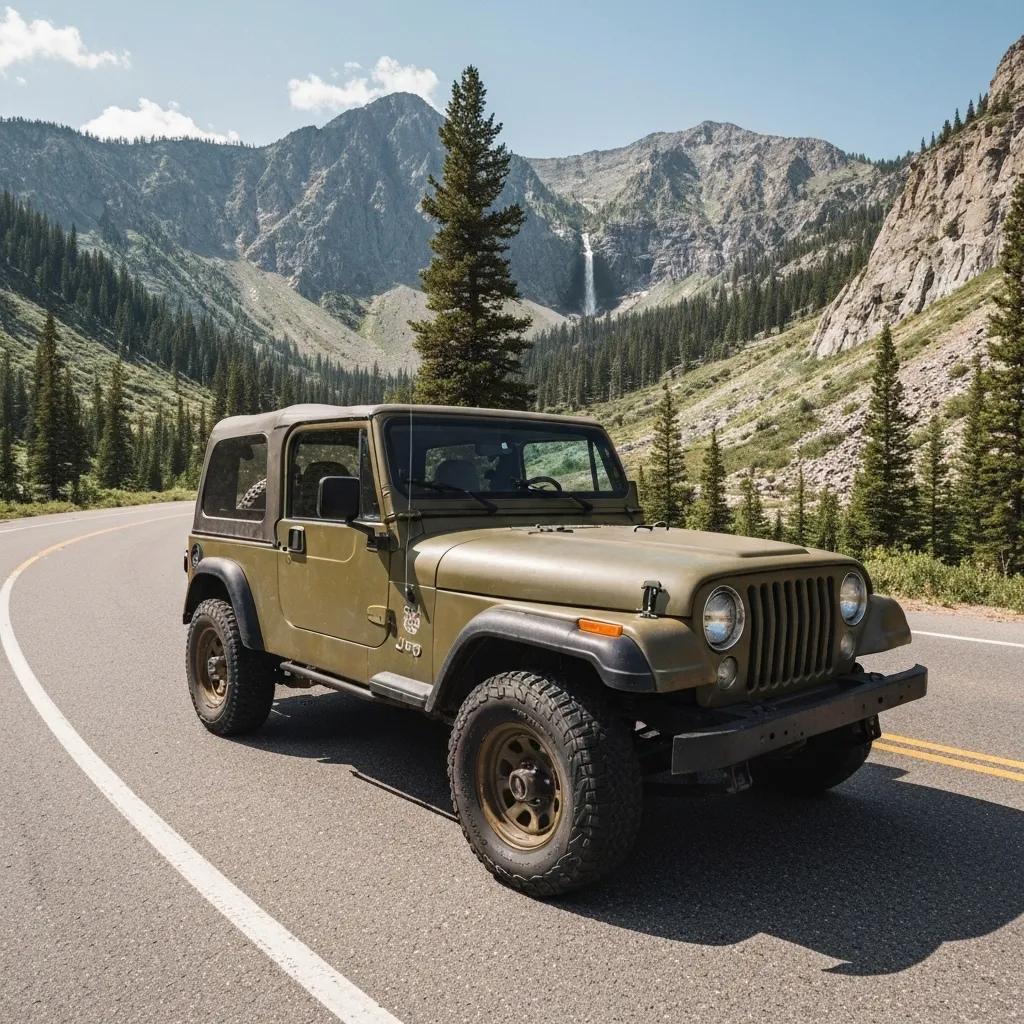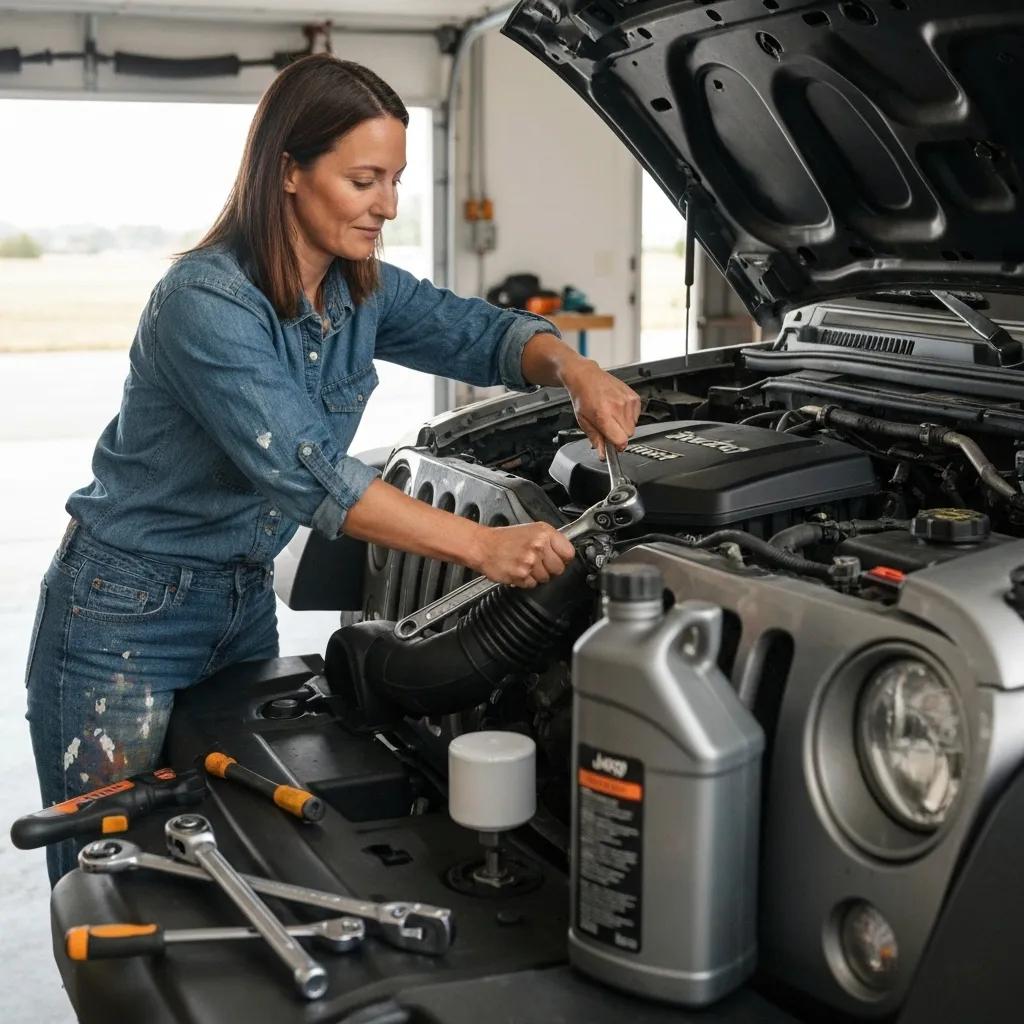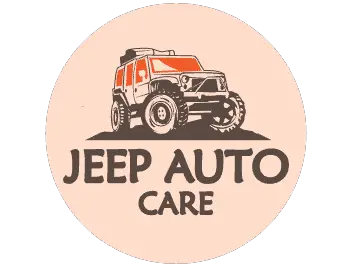
Table of Contents
Craft Your Ultimate Jeep Maintenance Checklist for Unstoppable Vehicle Care
A comprehensive Jeep maintenance checklist is your roadmap to keeping your rig trail-ready, blending timely inspections, model-specific needs, DIY know-how, troubleshooting tips, and exclusive membership perks. By aligning tasks with mileage milestones, adapting to the unique features of your Wrangler, Grand Cherokee, or Gladiator, equipping yourself with step-by-step DIY procedures, and tackling common issues like the dreaded death wobble, this guide ensures you maintain peak performance. You’ll also uncover the advantages of the Jeep Wave Program and the reliability of genuine Mopar parts. Discover essential services at 7,500; 15,000–20,000; and 30,000+ miles, learn about model-specific variations, stock your home garage with the right gear, prevent costly breakdowns, and leverage manufacturer programs to maximize your vehicle’s lifespan.
What Are the Must-Do Jeep Maintenance Tasks Based on Mileage?

A mileage-based maintenance schedule organizes your service tasks around key usage benchmarks, helping you prevent wear and tear and maximize your Jeep’s reliability. For instance, routine checks at 7,500 miles are crucial for engine health, mid-range inspections at 15,000–20,000 miles ensure your comfort and safety, and the 30,000-mile service is vital for preserving drivetrain longevity.
Establishing a clear mileage framework sets you up for detailed mid- and long-term service needs.
What Essential Maintenance Should Be Done Every 7,500 Miles?
Every 7,500 miles, swap out the engine oil and filter to keep your engine performing at its best by removing contaminants and reducing wear.
- Change the engine oil using the manufacturer’s recommended grade.
- Rotate your tires to ensure even tread wear and optimal handling.
- Check the levels of your coolant, brake fluid, and power steering fluid.
Tackling these fundamental tasks builds a solid foundation for more in-depth inspections at higher mileage intervals.
What Inspections and Replacements Are Needed Every 15,000 to 20,000 Miles?
Between 15,000 and 20,000 miles, it’s time to inspect your filters, brakes, and suspension components to guarantee your safety and comfort on the road.
- Replace the engine air filter and cabin air filter for unrestricted airflow.
- Inspect brake pads, rotors, and calipers for any signs of wear.
- Examine shocks, struts, and control arms for any leaks or damage.
These mid-range checks prepare your Jeep for the comprehensive 30,000-mile service.
What Does the 30,000-Mile and Beyond Service Entail?
The 30,000-mile service includes replacing spark plugs, changing the transmission fluid, and reviewing the suspension to preserve your Jeep’s longevity and ride quality.
- Replace spark plugs to optimize combustion and fuel efficiency.
- Change the transmission fluid and filter to prevent slippage and wear.
- Inspect and lubricate suspension joints and driveshaft U-joints.
With these major services completed, focusing on model-specific considerations will further fine-tune your Jeep’s maintenance plan.
How Do Jeep Model Variations Impact Your Maintenance Checklist?
Each Jeep model boasts distinct powertrains, chassis designs, and off-road equipment that influence its maintenance requirements. Understanding these differences ensures you apply the correct checklist adjustments and maintain optimal performance across all trims.
What Are the Key Maintenance Differences for Jeep Wrangler Owners?
Jeep Wrangler owners should pay special attention to differential fluid, axle seals, and chassis lubrication, given the solid axles and frequent off-road adventures.
- Change the front and rear differential fluids.
- Inspect axle housing seals for any signs of leaks.
- Lubricate door hinges and steering linkage regularly.
Addressing these Wrangler-specific tasks keeps your rig ready for the trails and ensures drivetrain durability.
How Should Jeep Grand Cherokee Maintenance Be Scheduled?
Grand Cherokee maintenance focuses on steering components, transmission service, and cabin air quality, crucial for comfort and towing capabilities.
- Flush and refill the power steering fluid.
- Inspect and service the automatic transmission pan gasket.
- Replace the dual-zone cabin air filters annually.
These steps help maintain smooth highway driving and a luxurious cabin environment.
What Unique Maintenance Does the Jeep Gladiator Require?
The Gladiator combines truck-like payload capacity with robust off-road suspension, necessitating drive belt inspections, cargo bed drain checks, and corrosion prevention measures.
- Examine serpentine belts for any cracks or glazing.
- Clear out drain holes in the cargo bed to prevent rust buildup.
- Apply frame and underbody sealant after muddy excursions.
These Gladiator-specific tasks protect both its utility functions and its rugged off-road toughness.
How Can You Tackle DIY Jeep Maintenance to Save Time and Cash?
Empower yourself with DIY Jeep maintenance to slash labor costs and gain valuable mechanical insight by handling routine tasks at home with minimal specialized equipment. Taking on common services yourself speeds up turnaround times and reinforces vehicle longevity through consistent, hands-on care.
What Are the Step-by-Step Instructions for Changing Jeep Oil?
Changing your Jeep’s oil involves draining the old fluid, replacing the filter, and refilling with the correct grade to maintain optimal lubrication and performance.
- Warm up the engine and securely park the Jeep on level ground.
- Carefully remove the drain plug and collect the old oil in a suitable pan.
- Replace the oil filter, torque it to specification, then refill with 5W-20 or 0W-20 oil.
- Check the oil level with the dipstick and inspect for any oil leaks.
Mastering this fundamental DIY task opens the door to tackling other maintenance opportunities.
How Do You Replace Jeep Air Filters and Check Fluid Levels at Home?
Replacing air filters and checking fluid levels at home is key to safeguarding your engine’s health and preventing overheating or contamination during daily use.
- Swap out the engine air filter every 15,000 miles for clean airflow.
- Inspect the cabin filter for debris and replace it if it appears clogged.
- Verify the levels of your coolant, brake fluid, power steering fluid, and windshield washer fluid.
These quick checks boost performance and keep all systems running smoothly.
Which Tools and Products Are Recommended for DIY Jeep Maintenance?

Setting up an essential home garage involves pairing quality tools with recommended products to ensure every task is completed accurately and safely.
With these tools and products readily available, you’ll be equipped to handle most routine maintenance tasks efficiently.
What Common Jeep Problems Can Maintenance Help Prevent or Fix?
Routine maintenance is your first line of defense against common issues like death wobble, oil leaks, and transmission problems, preventing them from escalating into costly repairs. By addressing the root causes through scheduled services, you keep your Jeep safe, reliable, and enjoyable throughout its life.
How Do You Identify and Troubleshoot Jeep Death Wobble?
Jeep death wobble typically stems from loose steering components and tire imbalance, manifesting as severe shaking at higher speeds.
- Torque the track bar and tie rod ends to the manufacturer’s specifications.
- Balance and rotate your tires to eliminate any uneven wear patterns.
- Inspect control arm bushings and ball joints for any excessive play.
Resolving death wobble restores driver confidence and prepares you to tackle fluid leaks.
What Are the Signs of Jeep Oil Leaks and How to Address Them?
Indications of oil leaks include puddles beneath the engine, low oil pressure warnings, and the smell of burnt oil, all pointing to the need for gasket inspection and seal replacement.
- Examine valve cover and oil pan gaskets for any signs of seepage.
- Replace aging seals and O-rings with genuine Mopar parts.
- Clean engine surfaces thoroughly and monitor for any new leaks.
Addressing leaks early on preserves engine health and helps prevent potential transmission issues.
How Can You Diagnose and Prevent Jeep Transmission Issues?
Transmission problems often begin with rough shifting or slipping gears; regular fluid checks and filter replacements are key to preventing premature wear.
- Check the fluid level and color; replace it if it appears dark or burnt.
- Swap out the transmission filter approximately every 30,000 miles.
- Use Mopar ATF+4 fluid to ensure proper friction characteristics.
Consistent transmission care guarantees smooth performance and extends its lifespan.
What Are the Benefits of Using the Jeep Wave Program and Genuine Mopar Parts?
Pairing the Jeep Wave Program with genuine Mopar parts offers significant maintenance advantages through complimentary services and OEM-quality components, ultimately extending your vehicle’s life, performance, and resale value. Membership perks and factory-matched parts reinforce a proactive approach to ownership.
How Does the Jeep Wave Program Support Your Maintenance Schedule?
The Jeep Wave Program provides complimentary annual oil changes, tire rotations, and 24/7 roadside assistance, all of which support an optimized maintenance schedule.
- Receive one complimentary oil change annually or every 10,000 miles.
- Benefit from free tire rotations accompanied by multi-point inspections.
- Access roadside assistance for towing, lockout situations, and fuel delivery.
These valuable benefits help reduce your overall maintenance costs and ensure you receive timely service reminders.
Why Choose Genuine Mopar Parts for Jeep Maintenance?
Genuine Mopar parts are engineered to meet factory specifications and use the same high-quality materials, ensuring durability and maintaining your Jeep’s warranty coverage.
- Experience a precise fit and finish for all filters, gaskets, and seals.
- Benefit from high-quality materials designed to resist heat, pressure, and corrosion.
- Enjoy the confidence of Mopar warranty backing and dealership support.
Using OEM parts delivers consistent performance and safeguards your investment in your Jeep.
How Do These Benefits Extend Jeep Vehicle Longevity and Performance?
Leveraging the Jeep Wave Program and Mopar parts ensures that your scheduled upkeep is supported by quality components, collectively reducing repair frequency, maintaining peak efficiency, and preserving resale value over time. The synergy of complimentary services and factory-engineered parts promotes a healthier vehicle that’s always ready for adventure.
Consistent, mileage-based inspections keep every system in peak condition and help prevent costly failures. Tailoring your service tasks to your specific Jeep model ensures you address unique chassis and drivetrain needs. Empowering yourself with DIY skills and the right tools not only saves you time and money but also deepens your understanding of your vehicle. Finally, combining manufacturer programs with genuine parts bridges the gap between professional service and home maintenance, delivering unparalleled reliability and performance for your Jeep.
Frequently Asked Questions
What are the benefits of regular Jeep maintenance?
Regular Jeep maintenance is crucial for ensuring the longevity and reliability of your vehicle. It helps prevent common issues such as engine problems, transmission failures, and brake wear. By adhering to a maintenance schedule, you can catch potential problems early, saving you from costly repairs down the line. Additionally, routine care enhances your Jeep’s performance, fuel efficiency, and safety, making your driving experience more enjoyable. Overall, consistent maintenance is an investment in your vehicle’s health and your peace of mind.
How can I tell if my Jeep needs maintenance?
Signs that your Jeep may need maintenance include unusual noises, warning lights on the dashboard, decreased fuel efficiency, and changes in handling or braking performance. Additionally, if you notice fluid leaks under the vehicle or a burning smell, these are indicators that something may be wrong. Regularly checking fluid levels, tire pressure, and the condition of belts and hoses can also help you identify when maintenance is necessary. Staying attentive to these signs can prevent more serious issues from developing.
What tools are essential for Jeep maintenance at home?
Essential tools for DIY Jeep maintenance include a 12-point socket set for removing bolts, a torque wrench for ensuring proper tension, and an oil filter wrench for easy oil changes. Additionally, having a jack and jack stands is crucial for safely lifting your vehicle. Other useful items include pliers, screwdrivers, and a multimeter for electrical diagnostics. Investing in quality tools not only makes maintenance tasks easier but also ensures that you can perform them safely and effectively.
How often should I check my Jeep’s fluid levels?
It is recommended to check your Jeep’s fluid levels at least once a month or before long trips. Key fluids to monitor include engine oil, coolant, brake fluid, power steering fluid, and transmission fluid. Regular checks help ensure that your vehicle operates smoothly and can prevent overheating or mechanical failures. If you notice any significant drops in fluid levels, it may indicate a leak or other issues that require immediate attention. Keeping fluids topped off is essential for optimal performance.
What should I do if I experience Jeep death wobble?
If you experience Jeep death wobble, it’s important to address it immediately as it can compromise safety. Start by checking the track bar and tie rod ends for tightness, as loose components are often the cause. Balancing and rotating your tires can also help eliminate uneven wear that contributes to the issue. Inspect control arm bushings and ball joints for excessive play. If the problem persists, consider consulting a professional mechanic to ensure all components are in good condition and properly aligned.
Are there any specific maintenance tips for off-roading with my Jeep?
When off-roading, it’s essential to perform additional maintenance checks to ensure your Jeep remains in peak condition. After a trail ride, inspect the undercarriage for dirt, mud, and debris that could cause corrosion or damage. Check the differential fluids and axle seals, as off-road conditions can lead to leaks. Additionally, inspect your tires for punctures or excessive wear. Regularly lubricate suspension components and ensure that all connections are secure to maintain optimal performance during your adventures.
How can I extend the lifespan of my Jeep?
To extend the lifespan of your Jeep, adhere to a regular maintenance schedule that includes oil changes, fluid checks, and inspections of key components. Use genuine Mopar parts for replacements to ensure compatibility and quality. Drive responsibly, avoiding aggressive acceleration and hard braking, which can wear out components faster. Additionally, store your Jeep in a garage or covered area to protect it from the elements. Finally, consider joining the Jeep Wave Program for added benefits and support in maintaining your vehicle.
Conclusion
Maintaining your Jeep with a structured checklist not only enhances its performance but also extends its lifespan, ensuring you enjoy every adventure to the fullest. By understanding model-specific needs and leveraging DIY skills, you can save time and money while keeping your vehicle in top shape. Embrace the benefits of the Jeep Wave Program and genuine Mopar parts for a seamless maintenance experience. Start your journey towards optimal vehicle care by exploring our comprehensive resources today.
